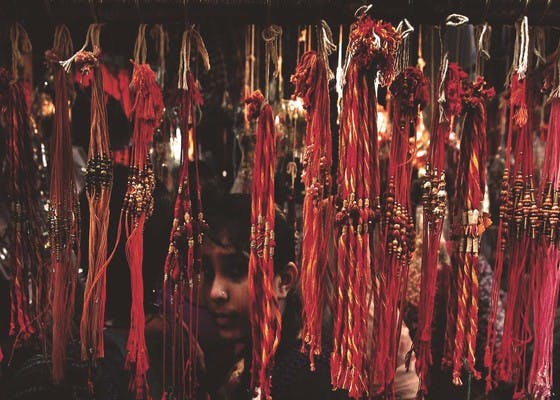
Recently, we spent an afternoon with Executive Chef Arun, sipping on chai and doing some professional chit-chatting. We touched on tales of his childhood, discovered his one-big-kitchen-no-no as well as his most cherished kitchen item. Come closer, dear patron, as there’s juicy goodness within...
When I was a child, my absolute favourite breakfast was Poha. It used to fill my belly with such warmth and comfort. A close family friend of ours from Bhopal used to come over and make it for us. She saw that I enjoyed cooking so one day she decided to teach me. Her version had potatoes, onions, peanuts and a little bit of sugar and lemon juice on top. Every time she’d have to stop me eating it straight from the pan! Since then, I have always made Poha ‘the Bhopal way’ (but now there’s no one to refrain my eager hand before it hits the table).
When by myself, I often cook meat dishes and simply marvel at how they evolve over time. Nihari is particularly good for this. For my friends and family, I love to make Punjabi Kadhi Chawal – a hearty dish consisting of deliciously crispy pakoras in a fragrant yoghurt sauce. Everyone around the table tucks in and someone always spills a little down their shirt! I just love how food can bring out a playful yet deep feeling of togetherness in this way.
It has to be a pestle and mortar. This takes pride and place in our home. The pestle and mortar is always the start of something delicious. I have years of stains to remember this. It's something that I use every day and have done since I first set my little foot into the kitchen to make masala chai. To this day, I grind the spices in the morning for my cup of chai (or three!). And as darkness draws in, I return home to the pestle and mortar to pound the khada masala for dinner.
I should say first that I love my wife dearly and she is a very good chef…but! We have very different ways of cooking. I like to be methodical and ordered, while she is a zealous multi-tasker and does everything all at once. For this reason, we aren’t allowed in the kitchen at the same time as each other.
The Chicken Ruby has been on our menu since day one – it’s our version of Butter Chicken (but personally I think it’s better!). We pour everything into this dish: the quality of ingredients, judicious use of spices, and slow, steady cooking time for the best, rich flavour. The attention to detail is everywhere here, which is easily overlooked when it comes to ‘comfort food.’
First: the chicken. Instead of chicken breast, we use chicken thigh. We find thighs are incredibly succulent and hold so much flavour from the marination. Before we even start cooking, our chicken is smothered in deliciousness and we’re building layers of flavour into the final sauce… which brings me to my second point: the gravy. We use tomatoes, whole spices, cream, butter, chilli powder and dill, which brings an earthy edge to it. We cook it down and will not stop until it is the most silky-smooth-sumptuous gravy – ruby rich. It’s hard not to love that! We’ve had guests come in before just asking for a bowl of “Ruby Gravy” and a Naan to mop it up!
Oh the perfect daal. I could write a book on this – it’s a topic so deeply personal and nostalgic. Most Indians grow up on Daal Chawal – I certainly did – so naturally a Mother’s daal is always the ‘perfect daal’. That being said, there are some principles to abide by that will ensure it leaves memories in your mouth forever.
The first is time. Daal must be cooked slowly, gently, with love and care. I used to joke with my wife when I returned home from work: first hugging the daal and then attending to her. When you cook daal slowly, the lentils cook evenly and the flavours continue to deepen (and deepen). When I worked at Mughal Sheraton in Agra, we would simmer the lentils overnight over the Tandoor. It’s a privilege to cook daal over charcoal.
The second is butter. At home, we don’t add as much cream or butter as a restaurant… but this will make you sink into your chair. At Dishoom, we watch as golden slabs of butter gently swirl as we stir the daal into greatness. Time and butter. So simple, yet if you follow these steps your daal will hug you from the inside out.
◇◇◇◇◇◇
As the hours slinked away and we sipped the final few drops of our chai, Arun sat on the edge of his seat – and with a large smile said: ❝I am so excited about what’s to come.❞
Keep your eyes peeled for part two of this Q&A where we unravel the tales and tastes behind the much-anticipated menu up-date – live in café on Monday 30th September.

September. She brings a clean change to the air and with it a new selection of first-class recommendations for what we're looking forward to over the coming month. Take a look at what Dishoom Loves.

After a recent trip to Bombay, we scoured the streets for yet more deliciousness. Brimming with ideas, our Chefs came home with much inspiration and invigoration! In these Supper Clubs, we will be showcasing delicious newness and sharing the tastiest, most thrilling bites of them all over three sittings in late September.

On the window of Dishoom King’s Cross, we painted the iconic and resounding words of the great Rabindranath Tagore

Pastis Executive Chef Jeremie Tomczak takes us on a culinary adventure through The Big Apple.